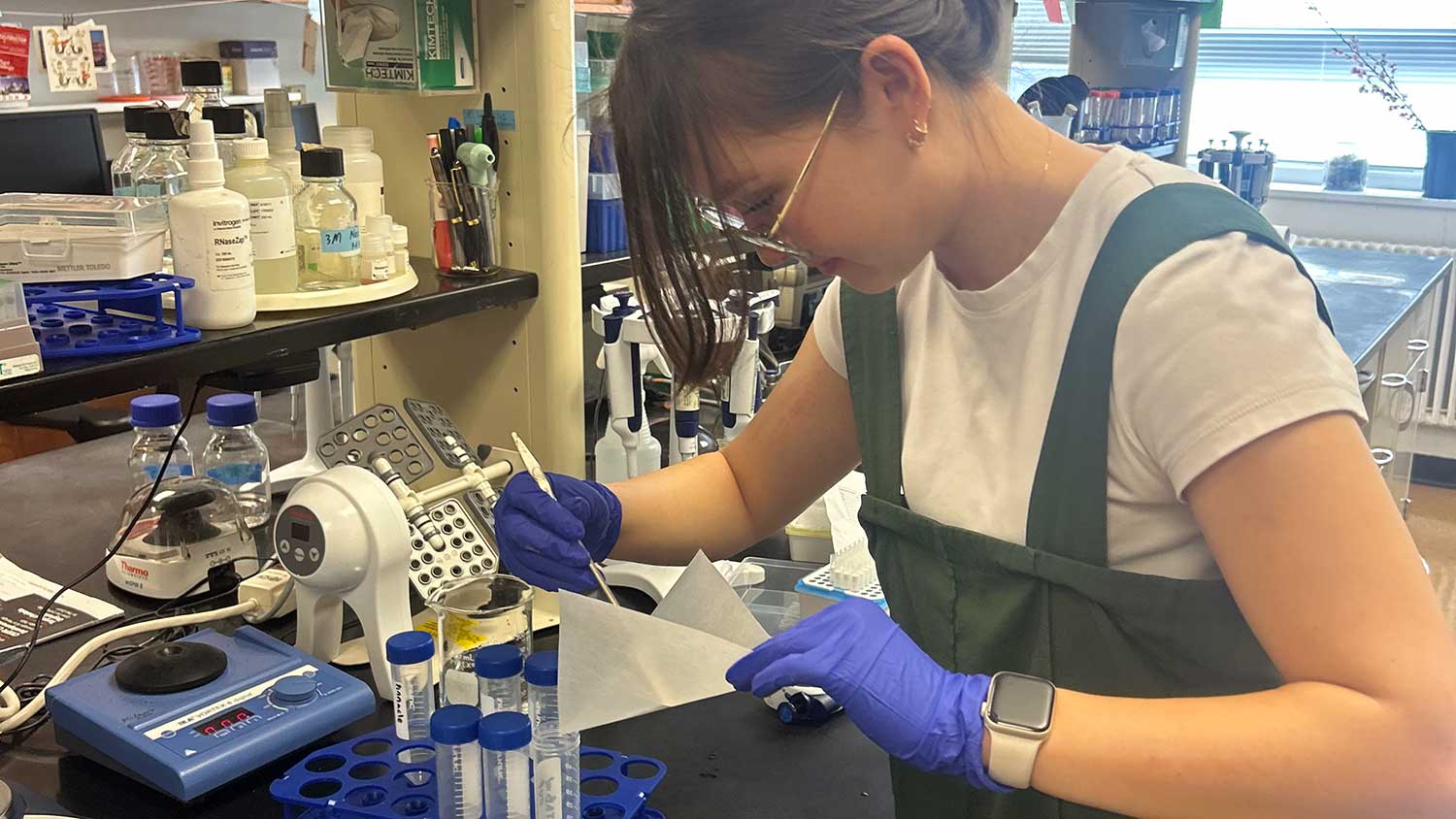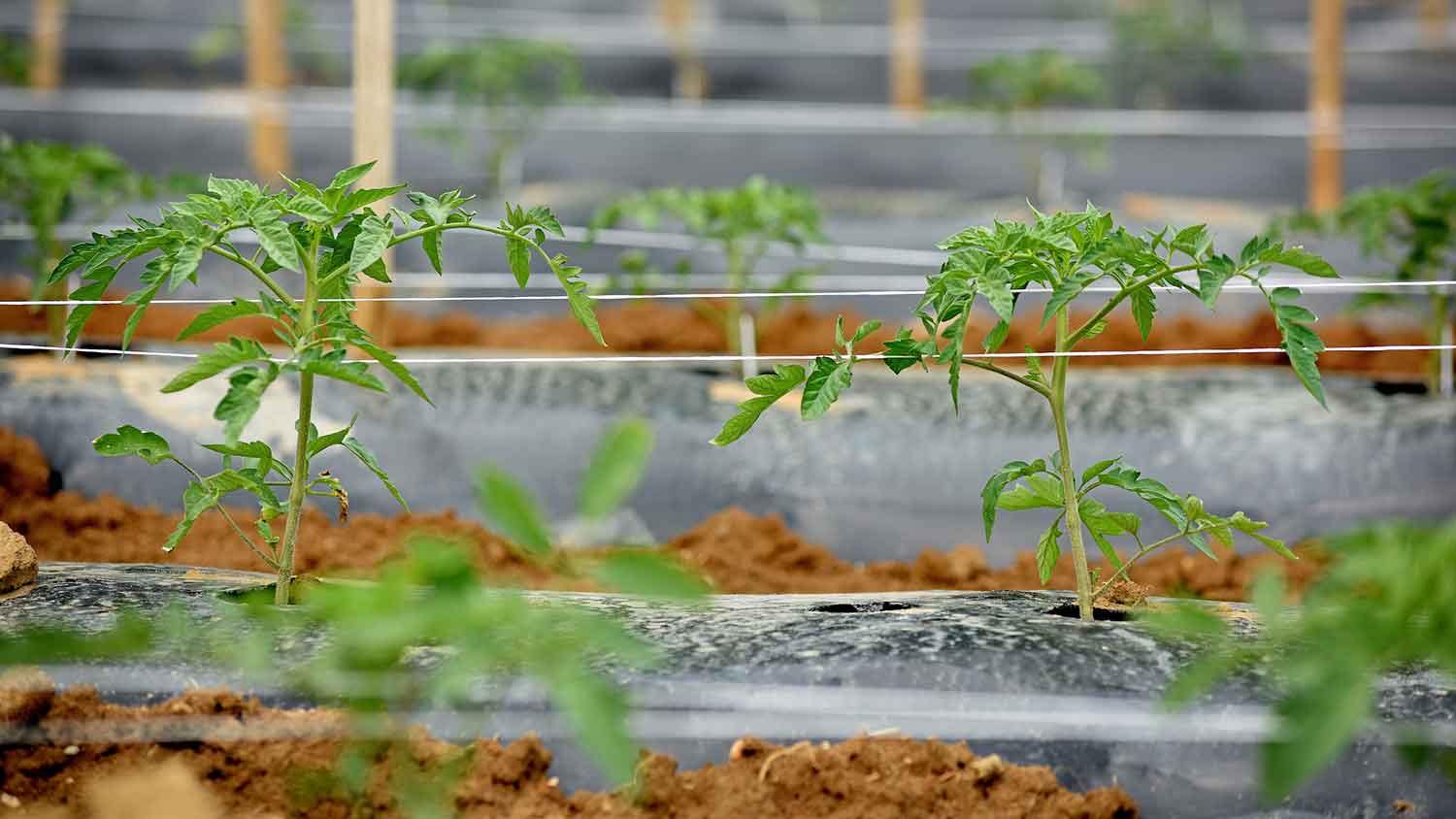Jack Bobo: Wood Substrates in Floriculture Production

Many countries in Europe have proposed bans or restrictions on peat, a staple ingredient in growing media, leaving growers and retailers searching for an affordable alternative horticulture substrate. Jack Bobo, a doctoral student at North Carolina State University, is studying the preconditioning of horticulture wood fiber substrates for use in the production of floriculture crops, including poinsettias.
Bobo’s research garnered first-place recognition at the American Society for Horticultural Science (ASHS)’s annual meeting for his oral presentation and second place for his research poster presentation on “Aging Alleviates Phytotoxic Effects in Wood Fiber Substrates for Some Floriculture Crops.”
When did you become interested in horticulture and plant sciences?
I was always interested in agriculture. I was a member of FFA in high school, and my dad is a veterinarian so when I got to Texas A&M to start my undergraduate degree, I declared animal science as my major. I took one horticulture class to satisfy a general science credit, and I was hooked! I learned that horticultural science was about asking and answering hard and important questions. It was fascinating, and I knew that I wanted to be a part of it.
What brought you to NC State and the Department of Horticultural Science?
When I was getting my master’s at the University of Georgia, I attended the annual ASHS meeting in Denver in 2021. I was at the career fair and I snagged a piece of chocolate off the NC State table, but I was unable to escape. A man in a bowtie caught me and said, “Do you think you’re going to get away with a piece of candy and not talk to me?” That man was Brian Jackson, and now I work for him in his Wood Substrates Lab.
Can you tell us about the research you presented?
The push for soilless substrates, that is, alternatives to peat moss, has never been higher and will continue to rise as countries begin to enact bans and restrictions on the crucial growing media component. The lab that I am a part of here at NC State focuses on more renewable raw materials to utilize as horticultural substrates, and my research is centered around using hammer-milled wood fiber from “Loblolly Pine” (Pinus taeda). Our hammer-milled wood fiber is an alternative that works; however, it cannot be used fresh. There are many chemicals within wood that trees use as defensive mechanisms to ward off pests and diseases, but when we use these trees immediately after felling the tree, and chipping and milling the wood, it severely stunts plant growth. My presentation revolved around ways to precondition our wood fiber substrate in order to alleviate these phytotoxic chemicals. We analyzed plant growth of poinsettia after preconditioning the wood in five ways: steaming, hot washing, cold washing, oven drying and simply aging for 100 days. The presentation was paired with a separate project where we utilized five coniferous trees from Northern California (ponderosa pine, sugar pine, Douglas fir, white fir and California incense cedar) and determined the phytotoxic potential of each of these species by the application of two bioassays: a sand culture technique and seed germination.
We found that aging wood fiber for 100 days was the most effective way to mitigate these chemicals when compared with the other preconditioning methods. Plant growth stunting varied based on tree species; white fir (Abies concolor) has the highest phytotoxic potential compared to all. Some crops are more sensitive to these wood chemicals than others.
What was your ASHS research poster about?
My poster presentation was titled “Aging Alleviates Phytotoxic Effects in Wood Fiber Substrates for Some Floriculture Crops” and it was essentially a sequel to my oral presentation. Now that we understood that aging was the best way to alleviate the phytotoxic chemicals from wood fiber, we sought to understand the highest ratio of aged wood fiber to peat ratio we could use as growing media in a poinsettia and marigold crop. We found that poinsettias can have up to 60% aged wood fiber in its substrate mix before seeing changes in plant dry weight. We also found that there were no differences in marigold plant dry mass across all ratios of fresh and aged wood fiber when compared to a peat/perlite control mix.
With this knowledge, we believe that growers, depending on the crop, can more confidently use higher ratios of wood in their substrate mixes, ultimately saving money as the costs of peat rise yearly.
What have been the highlights of your experience at NC State?
Gaining teaching experiences, insight into research and travel opportunities are just some of the highlights of my time here. My adviser, Dr. Jackson, and my labmates are founts of knowledge and wisdom, and I just feel lucky to be a part of the lab!
Are you interested in horticulture research?
Horticultural Science impacts growers, industry, students and everyday North Carolinians through cutting-edge research programs.
For a hands-on academic path that provides real-world benefits and applications. Explore our undergraduate and graduate programs to learn from expert faculty and have career-focused experiences.
Training future ag leaders is part of how we are advancing plants.


